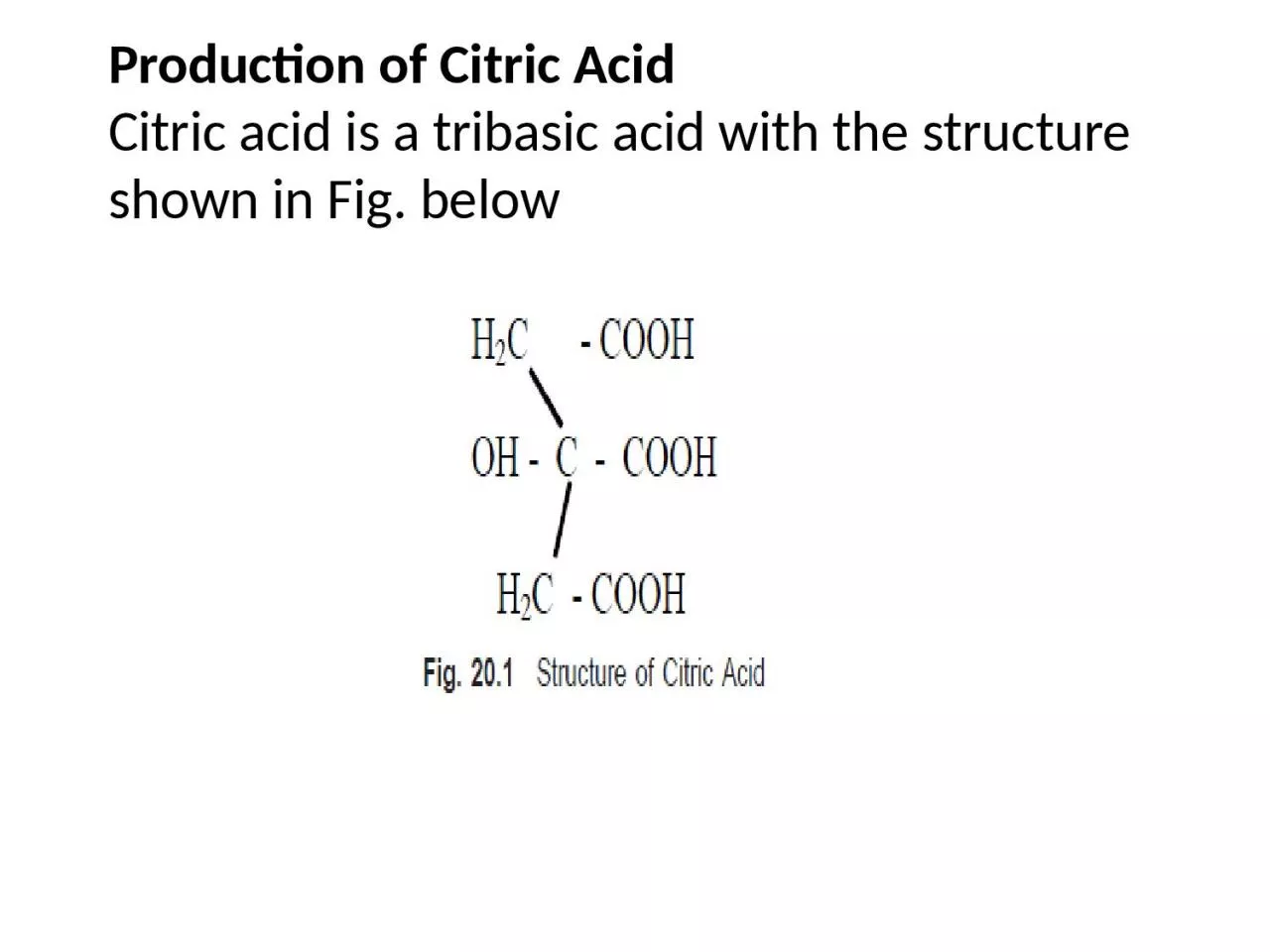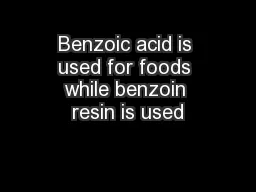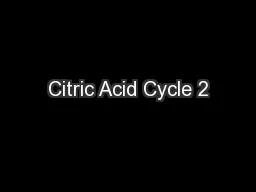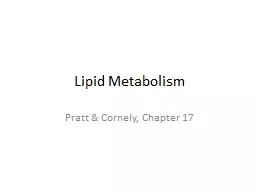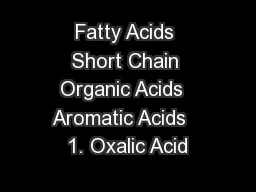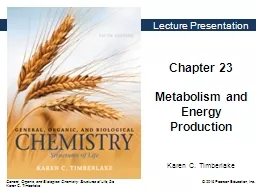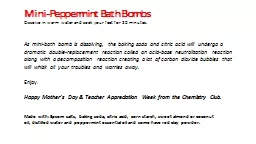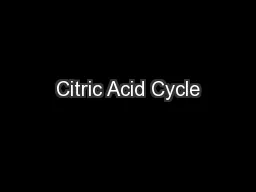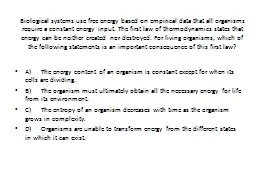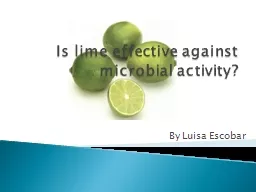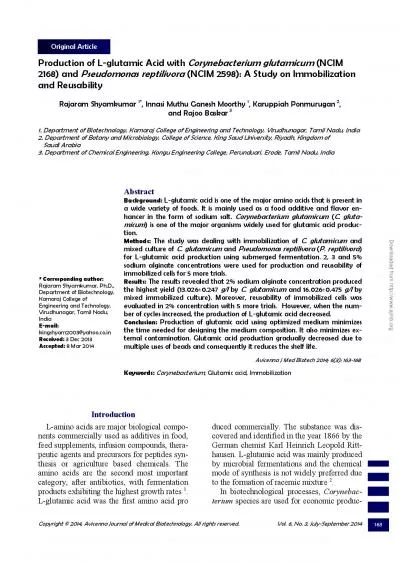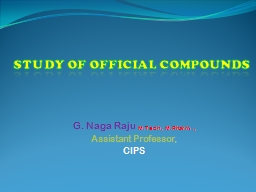PPT-Production of Citric Acid
Author : teresa | Published Date : 2024-01-13
Citric acid is a tribasic acid with the structure shown in Fig below Uses of Citric Acid Citric acid is used in the food industry in medicine pharmacy and in
Presentation Embed Code
Download Presentation
Download Presentation The PPT/PDF document "Production of Citric Acid" is the property of its rightful owner. Permission is granted to download and print the materials on this website for personal, non-commercial use only, and to display it on your personal computer provided you do not modify the materials and that you retain all copyright notices contained in the materials. By downloading content from our website, you accept the terms of this agreement.
Production of Citric Acid: Transcript
Citric acid is a tribasic acid with the structure shown in Fig below Uses of Citric Acid Citric acid is used in the food industry in medicine pharmacy and in various other industries. Kinetics:. Diffusion . through a Polymer Membrane Using a Saturated Solution Reservoir System . Jan-. alfred. . Aquino | Christopher Chen | . Yanglu. Chen | Zachariah . DeGiulio. | Katherine Dong | Christina . soaps. Acetylsalicylic acid. Acetic acid +water. Carboxylic acids. Aliphatic carboxylic acids. Formic acid pungent. true . C483 Spring 2013. 1. A . metabolic pathway that . is involved in both energy production and biosynthesis is. Anaplerotic. amphibolic. C) . . Duplibolic. Cataplerotic. 2. Carbons . from acetyl CoA are transferred to the citric acid cycle. Which is the first round of the citric acid cycle that could possibly release a carbon atom originating from this acetyl CoA? . Pratt & . Cornely. , Chapter 17. Catabolism Overview. Lipids as a fuel source—diet. Beta oxidation . Mechanism. ATP production. Ketone bodies as fuel. TAG and FA. High energy. More reduced. Little water content. 9. Citric Acid 10. Succinic Acid 11. Fumaric Acid 1. 3-Amino, 4-Hydroxybenzoic Acid 2. 4-Hydroxybenz less Steel 9478 Stainless Steel 1. Lauric Acid (C12:00) 2. Myristic Acid (C14:00) 3. Palmitic A C. . Timberlake. Lecture Presentation. Chapter . 23. Metabolism and Energy Production. Chapter 23 Metabolism and Energy Production. Exercise physiologists work with athletes as well as patients who have been diagnosed with diabetes, heart disease, pulmonary disease, or other chronic disabilities or diseases. . Dissolve in warm water and soak your feet for 20 minutes.. Made with: Epsom salts, baking . soda, citric acid, corn starch, sweet almond or coconut oil, distilled water and peppermint essential oil and some have red . Pratt & . Cornely. , . Ch. 14. Overview. Compartmentalization. Glycolysis: . Cytosol. Pyruvate carried into mitochondria via transporter. GNG: Starts in mitochondria, but mainly cytosol. Citric Acid Cycle: mitochondria. A) The energy content of an organism is constant except for when its cells are dividing. . B) The organism must ultimately obtain all the necessary energy for life from its environment. . C) The entropy of an organism decreases with time as the organism grows in complexity. . By Luisa Escobar. Family: . Rutaceae. Genus . :. Citrus . Aurantifolia. (. Mexican Lime. ). Many species are known.. Native to Himalayan region of India.. S. mall deciduous tree. Flowers appear in spring and summer.. Industrial Biotechnology. refers to the use of microorganisms or biological substances such as enzymes to perform . industrial. or manufacturing processes.. Industrial microbiology. tion of glutamic acid by submerged fermenta-. L-glutamic acid is produced per year using coryneform bacteria. A number of fer-mentation techniques have been used for the production of glutamic acid . M.Pharm. . .,. Assistant Professor,. CIPS. Study of official compounds. SALICYLIC ACID. FORMULA : C. 7. H. 6. O. 3. . Mol. Wt. :138.1. PREPARATION . Treatment of Sod. . Phenoxide. with CO. 2 . at 125. Download PDF Acid Reflux Solution Kit™ eBook by Barton - a comprehensive step-by-step system designed to treat acid reflux and heartburn issues naturally.
Download Document
Here is the link to download the presentation.
"Production of Citric Acid"The content belongs to its owner. You may download and print it for personal use, without modification, and keep all copyright notices. By downloading, you agree to these terms.
Related Documents

